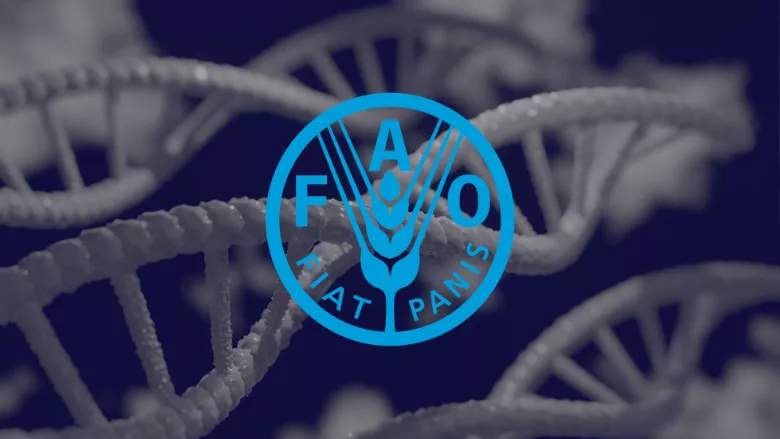FAO: Food Safety of Gene-Editing “Not Much Different” than Traditional Breeding Techniques

Credit: Mahmoud-Ahmed via Pixabay, FAO
The Food and Agriculture Organization of the United Nations (FAO) has released a report on food safety considerations for regulating foods derived from gene editing (also known as “genome editing”) to help national authorities develop and implement policies and regulatory criteria for food products derived from gene editing. The report provides a review of food safety related issues in applying gene editing for food production, including the applicability of existing Codex Alimentarius principles and guidelines for relevant food safety assessments, and offers key considerations for food safety regulations.
In the report, FAO defines “gene editing” as “an umbrella term for various techniques based in molecular biology used for introducing targeted changes in the genome of living organisms,” which can be used to breed new plant varieties, animal breeds, and microbial strains for agricultural purposes. Gene editing techniques can quite effectively deliver the desired change in a DNA sequence. Gene editing techniques include:
- Meganucleases
- Zinc-finger nucleases
- Transcription activator-like effector nucleases (TALEN)
- Clustered regularly interspaced short palindromic repeats (CRISPR) and CRISPER-associated (Cas) nucleases.
Gene editing can result in increased food production and quality, and can contribute toward food supply sustainability and climate change resilience. FAO believes that gene editing technologies, if determined to be safe, represent a promising new tool for plant and animal breeding in low- and middle-income countries (LMIC).
The report provides an overview of gene editing applications, such as when a gene-edited high oleic soy was allowed on the market in 2019 in the U.S., being the first commercially available food derived from a gene-edited source. Also mentioned are other gene-edited crops, animals, and microorganisms, as well as a list of food and agriculture products currently being developed with gene-editing techniques. Examples of gene-edited products in the global development pipeline include, but are not limited to: bananas with disease resistance and biofortified with vitamin A, cassava with reduced cyanide levels, gluten-free wheat, hypoallergenic milk, and swine resistant to African Swine Fever.
The first country to acknowledge gene editing for food and agriculture through regulatory action was New Zealand in 2013. Since then, Argentina, Chile, Israel, the U.S., Brazil, the EU, Australia, Ecuador, Guatemala, Honduras, Nigeria, Paraguay, the Phillippines, Japan, Canada, South Africa, China, India, and Kenya have also made regulatory responses to gene-edited foods. Overall, most of the governments that are enacting policies for gene editing applied in food and agriculture are using their national regulatory frameworks on modern biotechnology, novel foods, or GMOs as a comparative model. In some cases, countries are relying on existing laws used to oversee the safety of food in general, regardless of the technique used to produce the food, and clarifying how existing regulatory provisions apply to products produced using gene editing. A few countries’ policies focused specifically on gene editing, but no country has created a new and separate category for the regulation of gene-edited food products.
To aid countries that need international guidance, the report reviewed Codex guidelines, showing that existing protocols and paradigms such as food safety risk analysis and guidance on whole food safety assessment processes can be easily tailored and applied to the safety assessment of gene-edited foods.
FAO concludes that the possible effects of gene editing on food safety, quality and trade are not expected to be much different from such effects on foods derived from pre-existing breeding techniques. Therefore, the relevant guidelines developed by Codex remain applicable for addressing the safety and fair trade of foods derived from gene editing.
Looking for quick answers on food safety topics?
Try Ask FSM, our new smart AI search tool.
Ask FSM →








